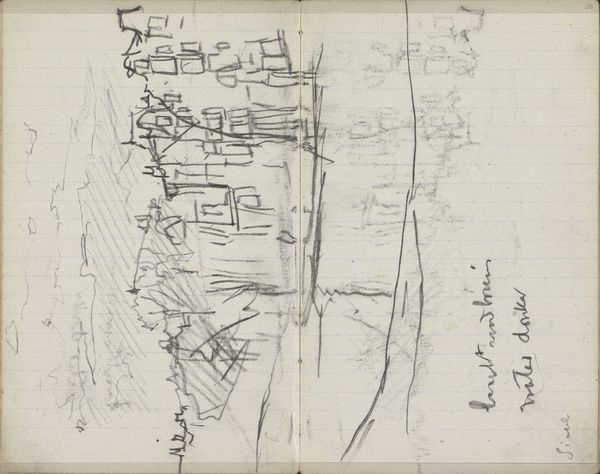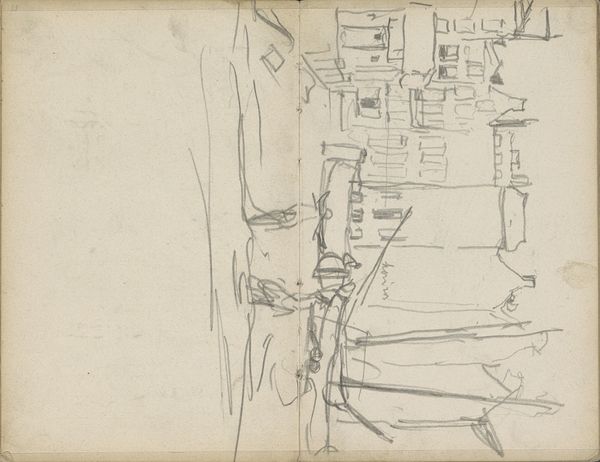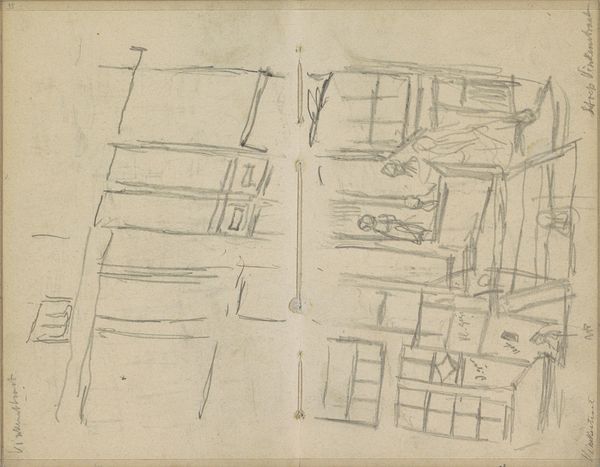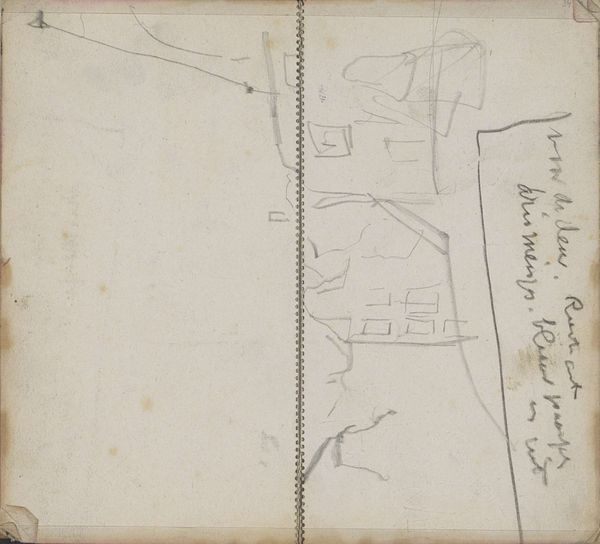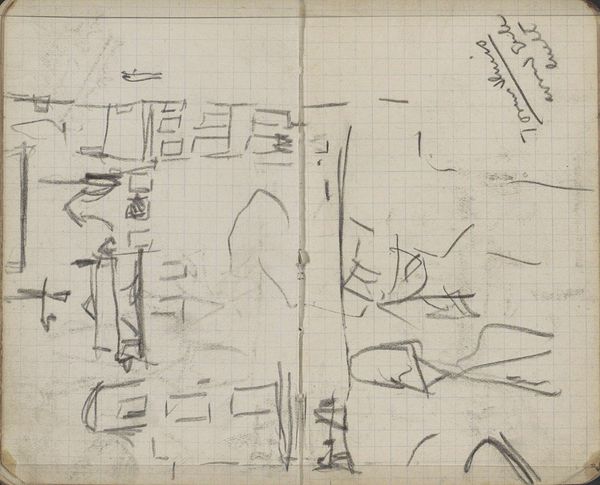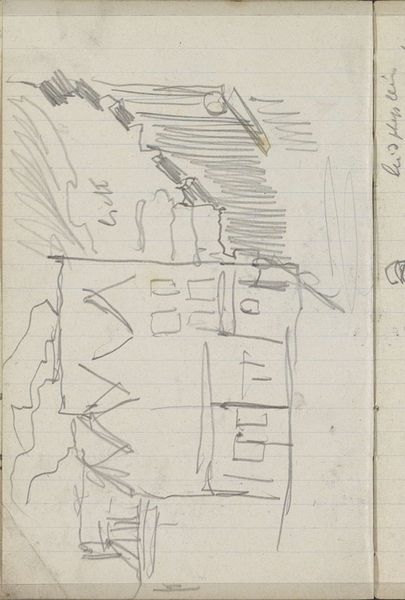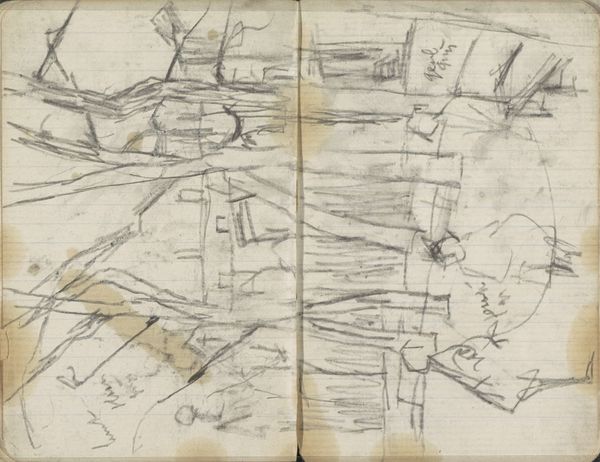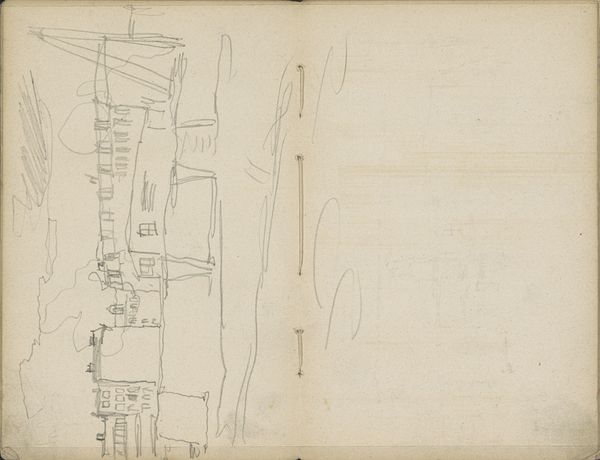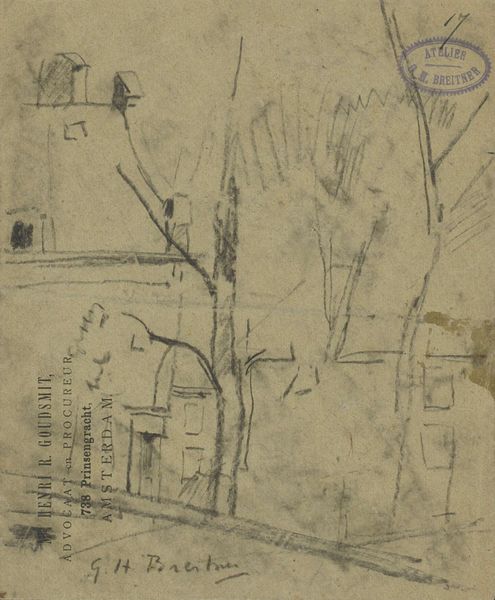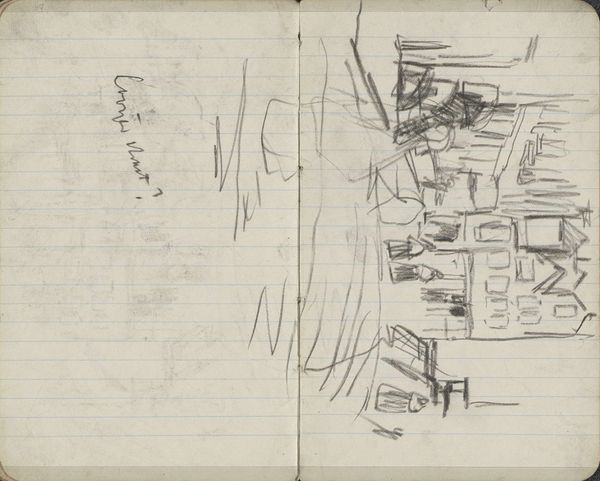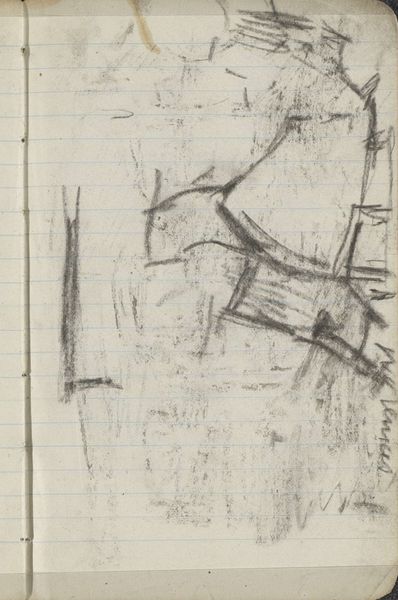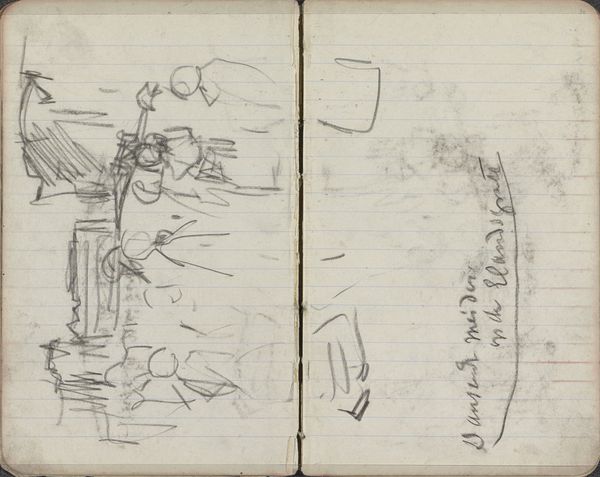
Copyright: Rijks Museum: Open Domain
Curator: Here we have "Gezicht op het Beursplein te Amsterdam," or "View of the Beursplein in Amsterdam," a pencil drawing created around 1893 by George Hendrik Breitner. Editor: My first thought is "fragmentary." The composition feels so immediate, almost like a fleeting impression jotted down on the go. The grid beneath adds a layer of intentionality. Curator: Precisely. Breitner was very interested in capturing the immediate experience of the modern city, especially as seen through the lens of rapid industrial and social changes of Amsterdam in the late 19th century. Note how his quick, sketch-like style emphasizes this impermanence. It's like witnessing his thought process, unfiltered. This resonates within discourses around the emergence of modernity and the changing role of the individual within the urban landscape. Editor: It also connects deeply with a kind of enduring quest for certainty. You can clearly observe an engagement with perspectival structure, using lines of sight to represent what he observed. And the quick scribbles to make marks indicating how the figures fill urban spaces still communicates volumes about social order. It has the feel of an image of something stable and unchanging. It feels like an architectural drawing in its sense of order. Curator: Absolutely. While Breitner engaged in the formal tradition, there's always the challenge of reconciling historical norms with what they represent politically in the contemporary era. The historical symbolism cannot simply be discarded—and neither can the implications. Editor: True, these historical artifacts still retain emotional resonance, even outside their original function. We may intellectually understand their symbolic role in art or culture, but the gut reaction of comfort remains. Curator: It’s through the friction between theory and reaction that we learn how we have become who we are, by inheriting tradition and working actively towards defining an identity. Editor: Seeing Breitner grapple with form and observation gives this seemingly casual sketch a real feeling of weight and timelessness, and makes you aware of how even something that looks incidental contributes to how we perceive the urban landscape to be at any given moment. Curator: And by acknowledging how we approach these narratives through modern experience, we appreciate this drawing as both an historical marker and active player in shaping our present.
Comments
No comments
Be the first to comment and join the conversation on the ultimate creative platform.
